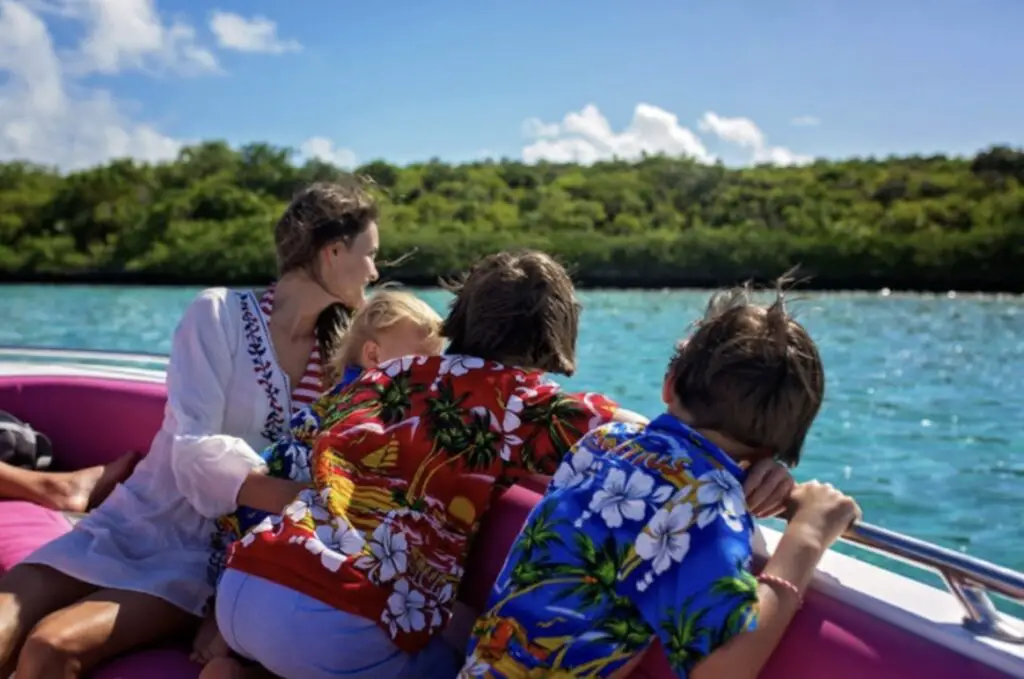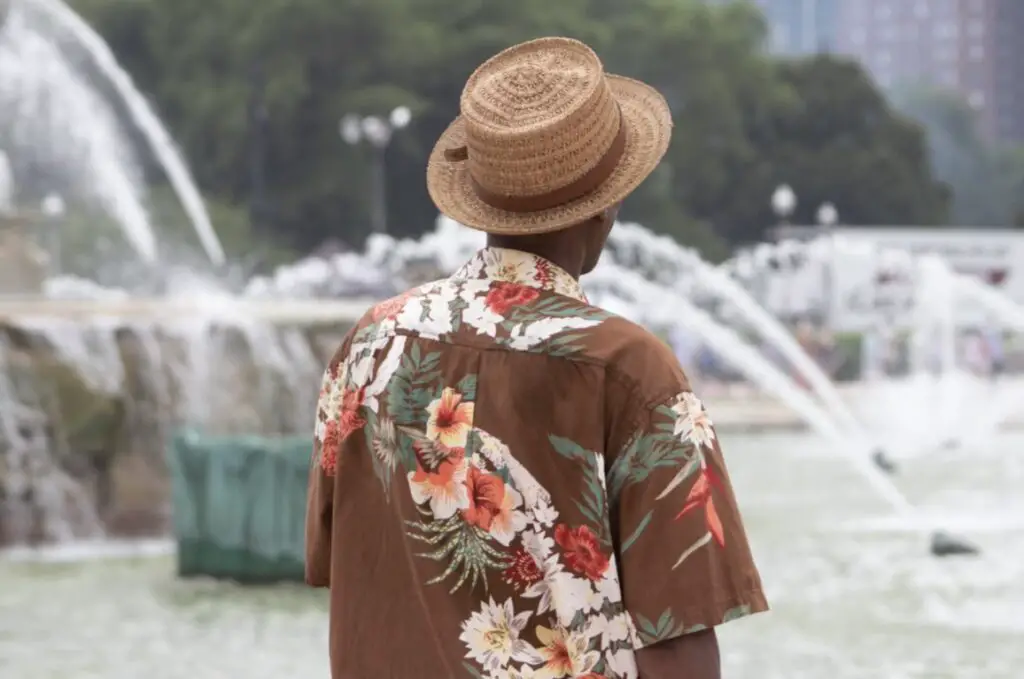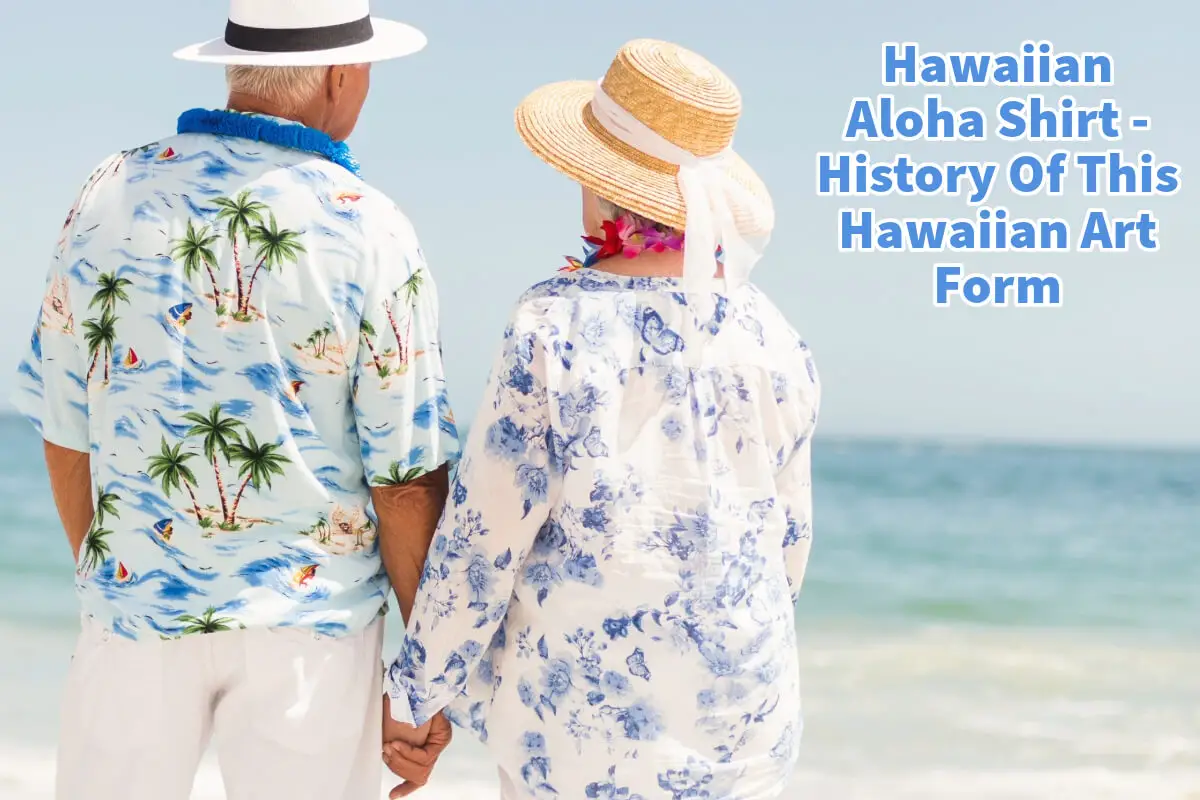The Hawaiian shirt, symbolic of the island’s vibrant culture and scenic beauty, symbolizes the aloha spirit worldwide. Today, those shirts are known as Aloha shirts.
With their vivid patterns and colors, these Hawaiian aloha shirts tell a story of cultural convergence and artistic evolution, making them more than just casual attire. They’re a fabric that captures the essence of Hawaii, its history, and its diverse influences. From a novelty item to an everyday garment for many, the aloha shirt, as it’s officially known, embodies the breath of life and the warm greetings that define Hawaiian hospitality.
Table of Contents
- Origins And Evolution Of The Hawaiian Aloha Shirt
- The Artistic Tapestry Of Aloha Shirts Explored
- Hawaii’s Aloha Shirt Is More Than Just A Shirt
- Related Questions
Origins And Evolution Of The Hawaiian Aloha Shirt
The origins of the aloha shirt are somewhat enigmatic, and there are multiple theories about its inception. Some believe it was crafted by a Japanese tailor in Hawaii using kimono fabric, while others argue its roots lie in the Philippines or even Tahiti.
Despite the uncertain origins, the essence of the shirt’s design—its unmistakably Hawaiian or Polynesian patterns—has remained constant.
The aloha shirt we celebrate today wasn’t always embraced with open arms. In the 1920s, when Gordon Young introduced it at the University of Washington, it caused quite a stir, highlighting the shirt’s departure from the mainstream fashion of the time. This initial skepticism, however, eventually gave way to widespread acceptance and adoration.

Western Influence And The Birth Of The Hawaiian Aloha Shirt
The Hawaiian Islands were relatively isolated until James Cook arrived in 1778, when Western clothing was introduced, and the islands’ cultural landscape was changed forever.
The subsequent influx of Americans and Europeans, along with Chinese and Japanese immigrants brought in for plantation work, introduced new fabrics and tailoring techniques.
This cultural melting pot laid the groundwork for the aloha shirt, officially coined and marketed by Ellery Chun, a tailor and businessman, in 1927. Chun named the shirt the Aloha shirt as a marketing campaign, but the name soon stuck, and a new, decidedly Hawaiian fashion was embraced.
Before World War II, Hawaiian shirts were so popular that Hawaii imported many printed fabrics from Japan. All of this changed in 1941 when Japan bombed Pearl Harbor and brought Hawaii to the forefront of the war.

Post-War Popularity And Design Evolution
Even though World War II marked a turning point for the Hawaiian aloha shirt, catalyzing its integration into mainstream culture and work attire entirely happened after the war.
By 1947, Hawaiian city council employees could wear aloha shirts to work, reflecting the garment’s growing acceptance. The post-war era, especially the 1950s, saw a surfing boom that further cemented the shirt’s popularity, aligning it with the laid-back, adventurous spirit of the islands.
Many famous personalities embraced Hawaiian shirts. Most notably, Elvis Presley embraced the Hawaiian shirt, and suddenly, wearing one in mainland America became popular.
Additionally, in 1973, Elvis Presley did a television segment at a concert in Honolulu called “Aloha from Hawaii.” He and many other musicians and cast members were photographed and seen wearing Hawaiian Aloha shirts.
Other late 1940s movie stars, including Al Jolson, John Barrymore, Douglas Fairbanks, and Ronald Colman, followed Elvis Presley’s example and were seen wearing Hawaiian shirts. They all helped create the “cool” Aloha shirt look.
By 1958, the manufacturing of aloha shirts had become Hawaii’s third-largest industry. This showcased the alohas shirt’s significant impact on the local economy and its recognition as a global symbol of Hawaiian leisure and beauty.

The Artistic Tapestry Of Aloha Shirts Explored
The aloha shirt’s allure lies in its intricate and diverse designs, a testament to the cultural amalgamation of American, Native Hawaiian, and Japanese influences.
From floral to maritime motifs and exotic animals to scenic landscapes, each shirt is a masterpiece that blends various art forms. This diversity ensures an aloha shirt for everyone, regardless of age, gender, or personal style, making it a universal symbol of the islands’ inclusive and welcoming nature.
Today’s aloha shirts range from subdued black-and-white patterns to vibrant depictions of tropical flora, fauna, and Hawaiian landscapes. This variety speaks to the shirt’s enduring appeal and its role as a wearable representation of Hawaiian art and culture.

Hawaii’s Aloha Shirt Is More Than Just A Shirt
The Hawaiian shirt, or aloha shirt, is much more than an article of clothing; it’s a vibrant expression of Hawaiian art, history, and culture. Its evolution from a controversial novelty to a cherished everyday garment reflects the dynamic story of Hawaii itself—a tale of cultural encounters, adaptation, and the creation of something uniquely beautiful. At its very core, the Hawaiian Aloha Shirt is a wearable art form.
The Hawaiian aloha shirt remains a beloved icon. It symbolizes the rich tapestry of influences shaping Hawaii and invites wearers and admirers alike to partake in the islands’ storied heritage and aloha spirit.
Anita Louise Art is dedicated to art education, great artists, and inspiring others to find and create their art. We love art that uplifts and inspires. #ArtToMakeYouSmile! #ArtToMakeYouHappy!
If you want to see any of my art, you can find out more by clicking here. If you are interested in what inspires me and my paintings, you can discover more by clicking here.
We have a free newsletter and would love you to be part of our community; you can subscribe to the newsletter by clicking here. If you have any questions, I would be happy to talk to you anytime. You can reach me, Anita, by clicking here.
Subscribe to our Anita Louise Art YouTube Channel with great videos and information by clicking here.
Join us for our podcast “5 Minutes With Art.”Spend 5 minutes a week with us to discover and learn about great art and artists. You can find out more about our podcast by clicking here.
Related Questions
How Did Mannerism Become An Offshoot Of The Works Of The Renaissance?
Mannerism is the art movement that emerged after the High Renaissance era. Mannerism art is an offshoot of the Renaissance; Renaissance artists such as Michelangelo and Raphael adopted mannerism techniques. Mannerism art exaggerated and distorted elements of Renaissance art while creating a sense of imbalance in their art.
By clicking here, you can learn more by reading How Did Mannerism Become An Offshoot Of The Works Of The Renaissance?
What Did Leonardo da Vinci Contribute To The Renaissance?
Leonardo da Vinci made many contributions to the Renaissance in art, science, engineering, medicine, and architecture. He was a keen observer who wrote down much of what he discovered in his notebooks. His artistic techniques changed how artists painted and influenced many other Renaissance artists.
By clicking here, you can learn more by reading What Did Leonardo da Vinci Contribute To The Renaissance?
Meaning Of “Art Speaks Where Words Are Unable To Explain”
“Art speaks where words are unable to explain” means that even though compelling, and cannot always convey the message. Words are powerful images, or art pieces can be much more potent than the spoken or written word.
By clicking here, you can learn more by reading the Meaning Of “Art Speaks Where Words Are Unable To Explain.”


